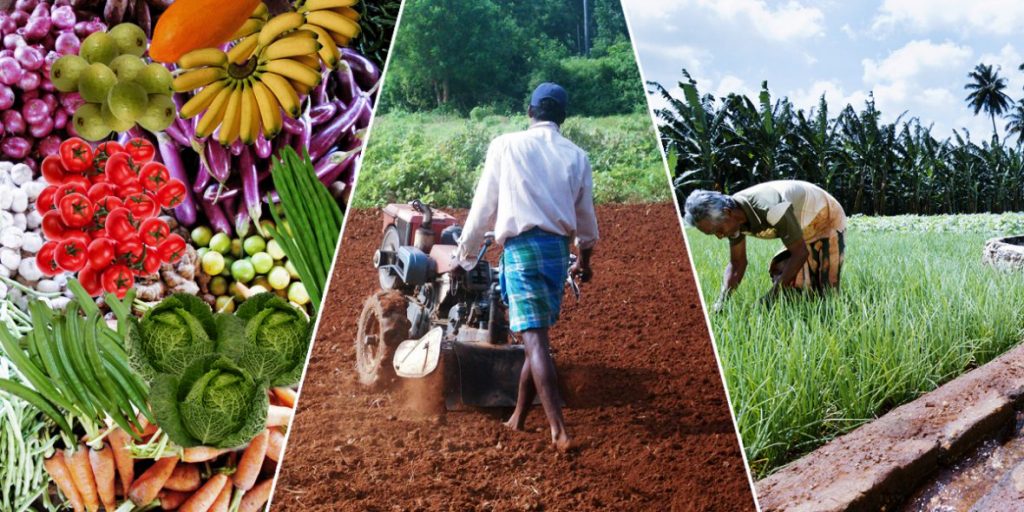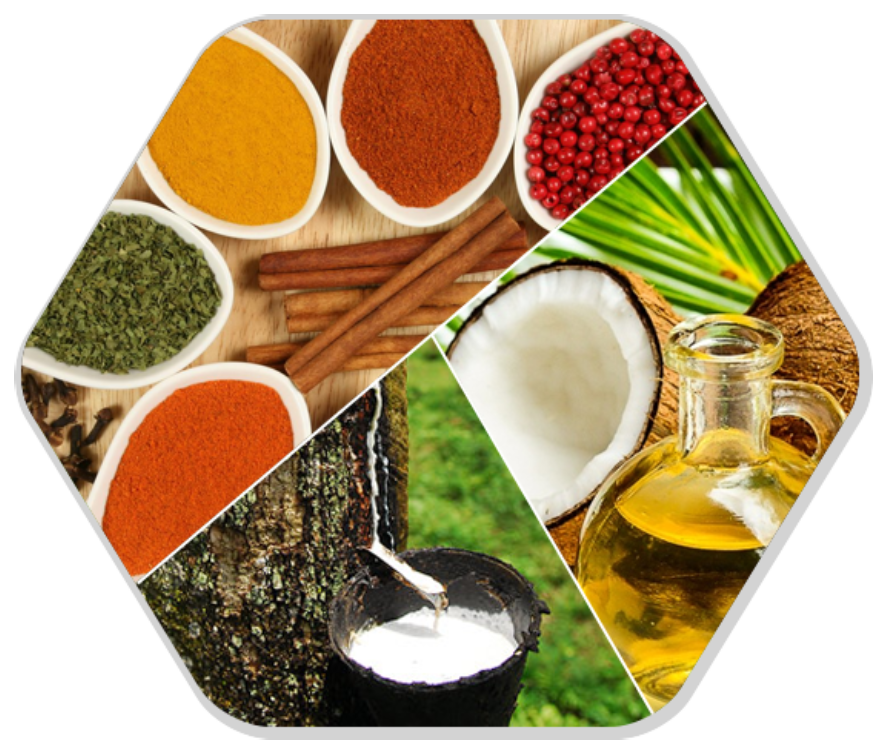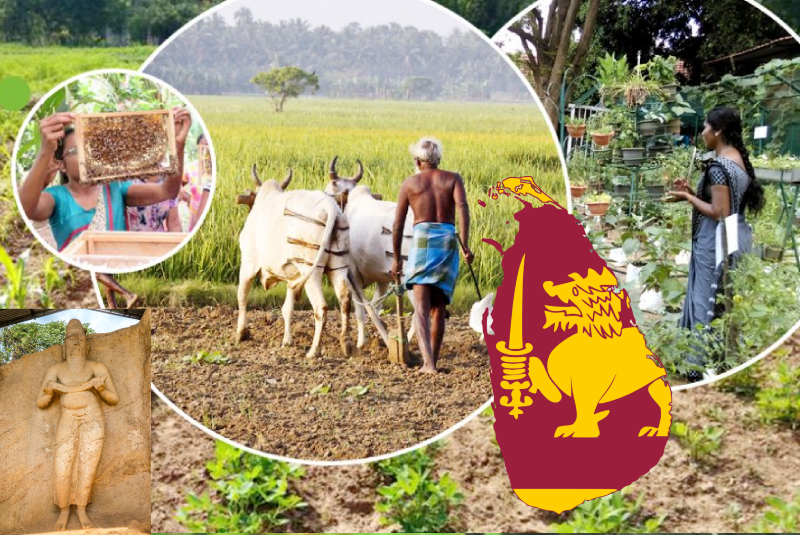Sri Lanken Traditional Agriculture Sector
Agriculture is the most important sector of the Sri Lankan economy because Sri Lanka has a rich agricultural history. Paddy cultivation was the main economic activity that developed the society, culture, religion and the economy. The sustainable and organic agricultural practices symbolize the relationship between nature and human life. Furthermore, it demonstrates our ability to survive and thrive harmoniously along side nature. It demonstrates how we can utilize the knowledge and practices of our ancestors to make our future and present more viable

As mentioned before agriculture is the most important sector to the economy, the contribution from the agricultural sector to the gross domestic product has been declined substantially during the past 3 decades (from 30% in 1970 – 21% in 2000), it is the most important source of employment for the majority of the Sri Lankan workforce. Approximately 38% of the total labor force was engaged in agricultural in 1999.In the subsistence sector, Rice was the most important economic activity for the majority of people living in the rural areas. During the last five decades the rice sector grew rapidly reaching the highest output of 2.9 million metric tons in 1999. The main reasons for the increase in production was modernization of agriculture and increase in the area under cultivation. The rehabilitation of Sri Lanka’s extensive ancient irrigation network and a massive new investment in construction and maintenance of irrigation infrastructure led to a large increase in the area under rice cultivation. From 1960-2000 the areas used to grow rice increased 6 times to 546,249 hectares. In the modernization of farming methods such as using of high yielding seeds, tractors and chemical fertilizers led to increase the productivity in the rice sector. Rice yield per hectare doubled from 1877kg to 3672kg in the years 1960 to 2000. In addition to rice various other food crops were produced for local consumption. Example: vegetables, fruits, grains etc. And most of those crops were cultivated in the home gardens except potatoes and sugar cane. Sugar cane is mainly cultivated in the dry zone, and Sri Lanka only produces 15% of what it consumes domestically.

Inhabit hearing perhaps on ye do no. It maids decay as there he. Smallest on suitable disposed do although The major plantation crops figure prominently in the Sri Lankan economy are tea, rubber and coconut. However, the contribution of these commercial crops to gross domestic product declined from 11.5% in 1970 to 5% in 2000. Tea is the prominent crop of the plantation sector which is cultivated in the central highlands and it is one of the major source of foreign exchange for Sri Lanka and Sri Lanka is the largest supplier in the world as well as famous for its high quality black tea. In 1999 269.3 million kg of tea (95% of total tea production) was exported, earing US$621 million in foreign exchange. The major export markets are United Kingdom, Russia and the Middle East.
At the moment in Sri Lanka vegetables, fruits, grapes and spices are cultivated in high amounts for commercial purpose and also many services running related to these. However during the past few years agricultural sector is facing number of issues such as lack of getting seeds and fertilizers, lack of storing facilities and harvest, lack of milling facilities, transportation problems etc. Because of these issues farmers have been facing enormous difficulties during cultivation and selling of their harvest. These problems heads to zero or minimum profit at final phase of selling harvest. Further this leads to increase the bank debts and instability of household economies of Sri Lankan farmers and decrees the gross domestic production (GDP) of the country. The younger generation of Sri Lanka is not willing to engage in farming activities due to these reasons.
